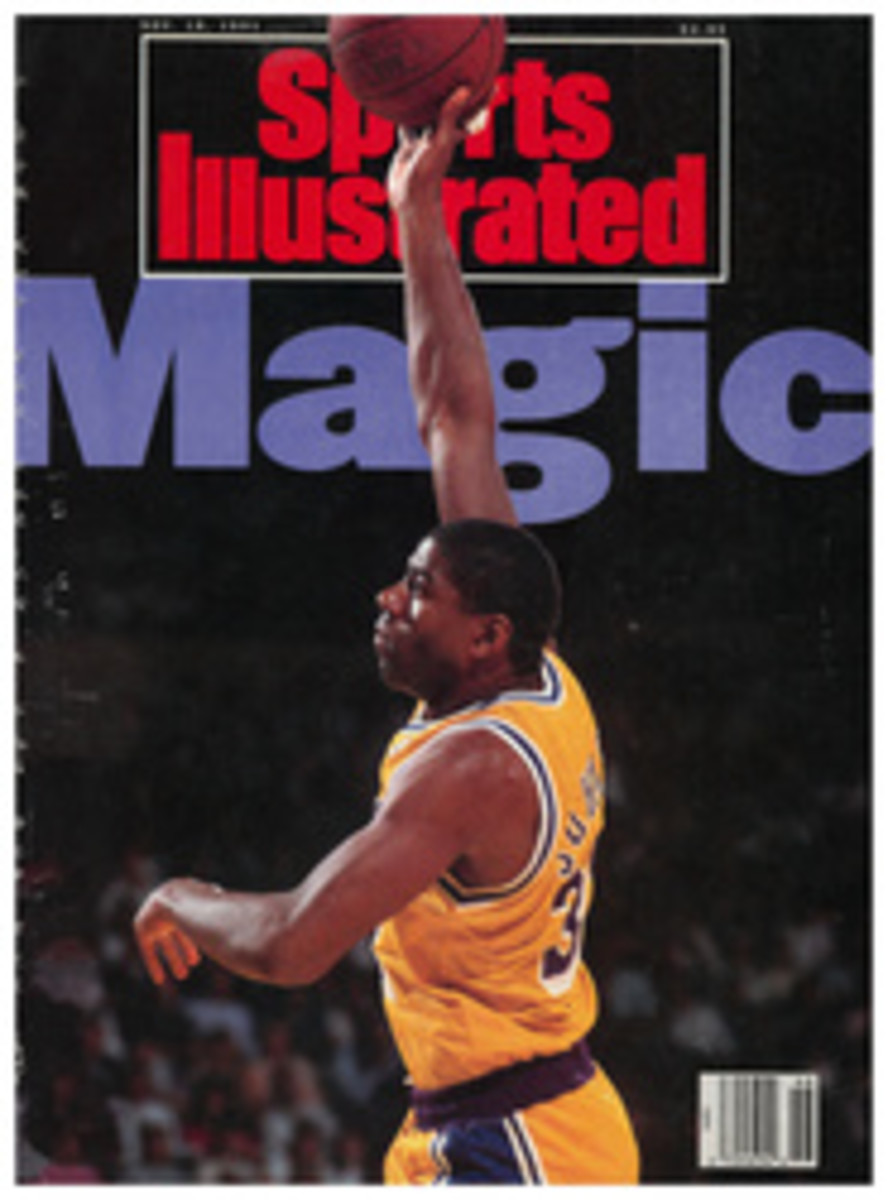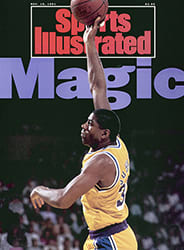
Vroom for Imagination
Harry Gant and Bill Elliott are hauling down the backstretch at Williamstown raceway—a short oval in the New Jersey Pine Barrens—running two wide as they dive into Turn 3. They get on the gas again at the apex, pushing tires and nerves to the limit, but Elliott has more backbone than rubber left. He blisters the left rear tire, spins and takes Gant out with him. The crowd holds its breath as the two cars careen toward the parking-lot curb, slam into it at 35 mph and come to rest in a tangle against a plastic fence. Curb? Parking lot? Thirty-five mph?
Welcome to quarterscale, radio-controlled racing, and to today's race, the Quarter Scale Auto Club (QSAC) Atlantic Regional Championship. While it may not be the real thing, it's amazingly close. Quarterscale stock cars, which cost around $1,500, are four-foot-long racing machines that mirror their full-sized counterparts with remarkable accuracy. Bodies and paint jobs are virtually identical, and the chassis on some of the models are copies of NASCAR designs. Almost all are equipped with coil springs, shocks and sway bars, the last of which are adjustable for optimum handling. They run on tires of various staggers and compounds, depending upon a track's turns and surface condition, and have carburetors, clutches and rear-end gearing that must be tuned for the ideal power band.
The only elements not in scale are the vehicle's weight—about 30 pounds, which would mean the real thing would weigh 120 pounds instead of 3,300—and its engine. But when fired up, the quarter-sealer's standard two-cycle chain-saw or weed-cutter gasoline engine snarls potently, emits a robust whine at top speed—about 50 mph—and fills the air with the smell of burning high-octane fuel.
Besides stock cars, quarterscalers are raced as sprint cars, supermodifieds, even dragsters. The hobby/sport enthusiasts seem to be either has-beens with real racing backgrounds or wannabes—racers of electric remote-controlled (R/C) cars who have moved up to quarterscale. The top three finishers at the QSAC championship were all wannabes.
Third-place finisher Bill Welch, 26, a Williamstown regular from Mays Landing, N.J., only recently converted to quarterscale gas from electrics. "I've never driven a real race car," said Welch before pulling the starter cord on his Bill Elliott Coors Light Thunderbird, one of the cars involved in the aforementioned spinout. "But the first time I won a quarterscale race, the adrenaline was pumping through me like you wouldn't believe."
The other driver in the Turn 3 tangle was Nick Piro, 48, an architect from Gloucester Township, N.J., who drove his replica of Harry Gant's Skoal Bandit Oldsmobile to a second-place finish. Piro started racing electric cars in 1979, well before the R/C boom hit in the early '80s, and introduced quarterscale to the South Jersey R/C Club. "Like a lot of guys in this thing, I have a technical background, so I enjoy setting up the car and getting it to go fast," said Piro. "But I've been involved in electric and quarterscale gas racing for more than 10 years, and after running 300 laps for an hour and 10 minutes, look—my hands are still shaking."
Surprisingly, the winner was competing in only his fourth quarterscale event. Vernon Harvell, 31, of North Babylon, N.Y., raced 1:10 scale electric cars for four years, but he tired of the expense and decided to become a quarterscaler. "The noise, the smell—it's more exciting than you might think," said Harvell. "I like matching wits with the other racers off the track. After I got my car, I bought a few books on stock-car design to learn the technical stuff about steering angle, roll-couple distribution, slip, angle—everything about suspension geometry that might help me win." And this guy's a beginner?
The has-beens tend to be former racers looking for a safe, affordable way to stay in racing. Ron Boorman, 55, director of quarterscale for the South Jersey club, was a successful go-kart and drag racer in the '70s. "I've driven all kinds of racing equipment, including most types of electric cars," he says. "Quarterscalers handle just like real cars."
Phil Kratzer is another exemplary has-been. A 52-year-old native of Peoria, Ill., who lives in Succasunna, N.J., Kratzer raced stockers in Florida. At the QSAC race he was tweaking his machine next to a trailer emblazoned with TECH TOYS, the name of the hobby shop in Parsippany that sponsors him. "This chassis is a direct replica of one by [NASCAR builder] Banjo Matthews," he said. "Same principles apply. Left rear tire gets you into the turn. Front right gets you out. If the car's loose going in, we'll give her a little wedge in the back. If she slips coming out, we'll work on the front."
While quarterscale racing is certainly a tinkerer's delight, Tinkerbells need not apply. The intensity of the competition is as authentic as it is with the real cars. Collisions prompt heated words, and frustrated drivers-turned-mechanics heave tools in the pits when their machines fail. Even informal club racing features 75-lap heats, a mike-equipped race steward waving yellow flags and assessing penalties, and computerized lap counting. However, in this regional race competition was especially fierce. Pride and a purse of $1,000—the winner received $105—were at stake, so cars qualified individually to decide starting positions in the three four-car heats that would determine the field for the 300-lap main event.
Quarterscale auto racing was pioneered eight years ago by former midget driver Steve Cheek of Buffalo, Texas, and midget and off-road racer Jon Rahe of Santa Ana, Calif. After a few scares driving a real midget, Cheek—whose father flew quarterscale airplanes—decided a diminutive, radio-controlled sprint car might be safer. Rahe, then chief engineer for a weed-cutter manufacturer, also was driven by safety concerns, though his first quarterscale was an off-road machine.
"It's not for your average 15-year-old with a paper route," says the 45-year-old Rahe. "But I get the same thrill driving the small car as I did the big ones. I also like getting that thrill without putting on a helmet or going to the hospital."
To date, Rahe's and Cheek's respective companies—RACO and WCM—have sold more than 10,000 machines between them, and other manufacturers are getting into the game. Ralph Greco, West Coast director of QSAC, says his organization has more than 500 members and estimates that there are 1,500 racers across the country. He also says the average number of cars showing up for big races in California has jumped from 40 just last year to 75 this year.
Quarterscale racing is most popular where most of the manufacturers and tracks are—California and Texas—but the New York-New Jersey area is also becoming a hotbed. At least 60 tracks have been set up nationwide. The largest quarterscale gathering in the country is the annual King Kenny Supernationals in Las Vegas. Last year 195 entries raced as sprints, grand nationals and supermodifieds for a purse of $13,000.
While quarterscale racing is appealing because the cars look, sound and smell so realistic, by far the most popular form of R/C racing is that of 1:10 scale battery-powered cars. Radio Operated Auto Racing (ROAR), electric racing's main sanctioning body, claims 15,000 members. Though less evocative of full-sized racers, the 1:10 electrics are faster and more nimble than quarterscalers.
National and international championships are contested in a variety of classes, including off-road, dirt and paved sprints, grand national and road racing. Manufacturers sponsor racers and spend hundreds of thousands of dollars testing cars and equipment, which is why most people involved say it's impossible to be competitive at the highest level without industry backing. Even recreational 1:10 racers spend substantially on spare parts, tools and equipment. Conversely, quarterscalers say their brand of remote-control racing entails a hefty up-front investment but doesn't require as much money to keep a competitive car on the track. Engines cannot be modified, for example, which holds down costs and forces drivers to sharpen their driving and tuning skills.
Whatever the scale or format, radio-controlled auto racing has one unifying virtue—it's one of the few ways race fans can become participants. A bunch of grown men fiddling around with chain-saw-powered toy cars may seem silly, but there's something charming about their fervor. "Sometimes during the week you can't get it out of your mind," says Harvell. "All you can think about is how to make your car work better and go faster."
Nothing small-time about that.
PHOTO
BILL EPPERIDGE
The tiny Bill Elliott T-Bird survived a crack-up on Turn 3 to finish third in Williamstown.
PHOTO
BILL EPPERIDGE
Most quarterscale drivers are racing's has-beens or wannabes.
PHOTO
BILL EPPERIDGE
Kratzer, a former stock car racer, likes tinkering with his eminently portable NASCAR replica.
Jack Mason is a senior writer for Time Warner Corporate Communications.

